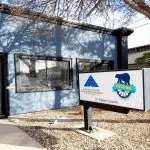
Strong Season: Canadian tennis scene blossoming with bright future ahead
TORONTO — Nicu and Maria Andreescu were sitting in a meeting room at Tennis Canada headquarters in Toronto recently when a wave of tennis folks came in to give them their best.
Tennis Canada CEO and president Michael Downey sat down to chat for over an hour. Staffers from the nearby training centre popped in to catch up and exchange hugs and pleasantries.
Nicu and Maria’s daughter, Bianca, trained at the facility during her formative years in the sport. Finally home after a breakout month to open the WTA Tour season, the Canadian teen was in the next room handling a long list of media interviews.


